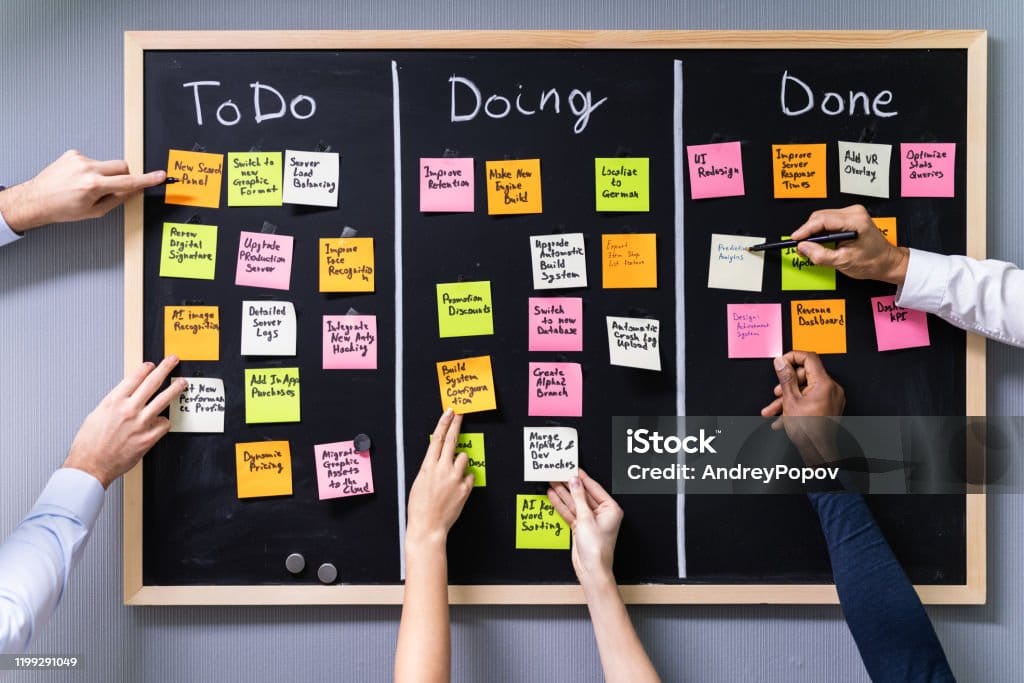A Simple Tool To Stay In Control Of Your Life
Do you find yourself often dropping the ball at work, or forgetting to follow up on a work assignment delegated to you? Perhaps you find yourself frequently overcommitting, causing a sense of loss when trying to meet the expectations imposed by others and self?
If the above scenarios are familiar, you are not alone. Maybe, using the tool called the Kanban board might alleviate those problems!
History of Kanban (看板 / かんばん)
Developed by Taiichi Ohno at Toyota in the 1940s, Kanban is a framework that maximises manufacturing process efficiency and reduces waste (time and resources). Efficiency was key during the rapid industralisation period, and the success of Toyota back in the day speaks for itself.
Kanban, when directly translated, means “visual” and “signboard”. This framework epitomises simplicity, as its early mode of application was literally just a signboard detailing manufacturing workflows and tasks at different stages of completion. An example of a basic Kanban board can be seen below.

How It Works
The board acts as a visualisation tool where tasks are represented by cards and columns represent the status of the tasks. The aim is to move the individual work tasks sequentially from start to completion. That’s pretty much it! Often, these boards are utilised by project managers and software developers to display and coordinate work progress in their team. Even though the aesthetics of this tool looks simple, it delivers astonishing value.
Benefits Of Using A Kanban Board
I was first introduced to the Kanban board back in 2020 during my pursuit for the Lean Six Sigma Green Belt Certification, equipping myself with methodologies and tools for process improvements. It’s been 3 years since I started incorporating the use of a Kanban board at work and here are my top 3 benefits derived from using this tool:
Prioritisation - At a glance, I can visually see the status of all my outstanding tasks. This prevents me from losing track of my responsibilities when workload increases overtime. Ever been in a situation where you are overwhelmed and just couldn’t decide where to start for the day? The high visibility of the board allows me to identify, prioritise and act on specific work tasks quickly. Bottlenecks can also be identified and focused on when a particular task hasn’t made any progress for a long time.
Setting Boundaries - The board not only serves as a visual aid on the number of outstanding tasks for yourself or your project team, it can also be a tool to inform your boss or key stakeholders about the current state of matters. There is a realistic limit to the number of open tasks one can tend to before the quality of work or deadlines are compromised. If there is a need for more tasks to be addressed, less important tasks should be taken off the table to free up some bandwidth. Having a visual board of outstanding tasks can facilitate realistic work expectations and make saying no to additional commitments a lot easier.
Multitasking - The Kanban board is highly versatile in its application. It can be utilised for personal pursuits, individual job responsibilities and also across different work projects involving multiple project members. Back when I was a project manager for a few sewer construction projects while concurrently planning and executing my organisation’s annual family day event as vice-chairman, I relied on separate Kanban boards for the management of each project. As I switched my attention across the multiple projects during my work day, I could easily identify my important work tasks and complete them in a timely manner.
Closing
It is likely that our lifestyles and work environment will continue to become more hectic and complex, especially so with the rapid development and adoption in technology. Social media and digital platforms constantly distracting and vying for our limited attention, while overcommitting at work becomes a norm to stay visible and relevant. Yet, a simple tool such as a Kanban board has empowered me with a systematic approach to navigate life’s challenges more effectively while cultivating self responsibility and adaptability.
Why not give the Kanban board a try? You might be in for a pleasant surprise!
